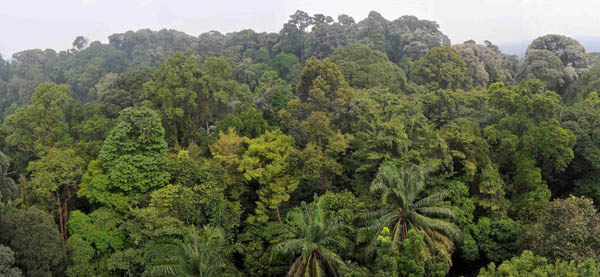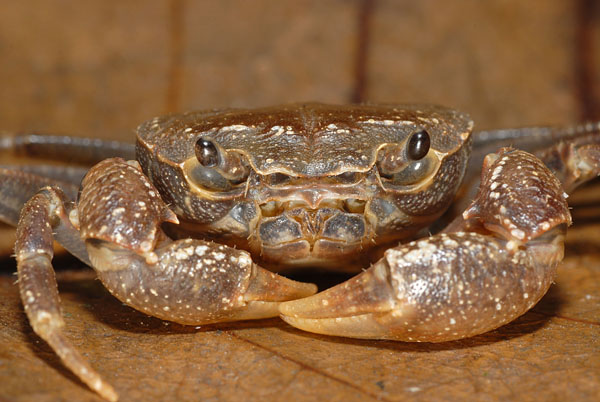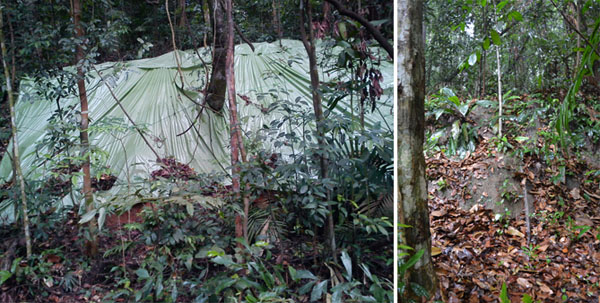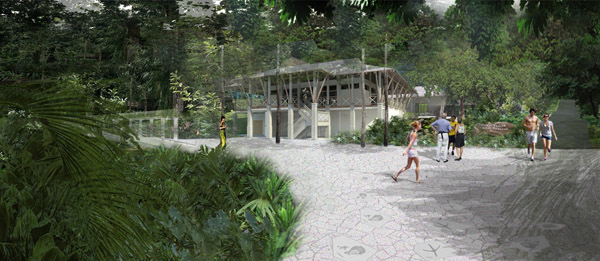Restoring A Treasured Nature Reserve

Bukit Timah Nature Reserve (or Bukit Timah Hill, as many would call it) is well loved by many of us – about 400,000 people visited the Reserve in the past year.
Many who visit relish the experience of being immersed in nature, where it feels like they are not in the middle of a bustling city, but a tranquil countryside.

Bukit Timah Nature Reserve is home to rare species of plants and animals, such as the Singapore Freshwater Crab (Johora singaporensis) which is found nowhere else in the world.
It is because so many of us love climbing its trails to the summit, or the adventure of exploring the interior of a tropical rainforest, that there has come a need to conserve the Reserve so that future generations may enjoy similar experiences.
Preventing erosion and regenerating the forest
The National Parks Board has been monitoring soil movement in the Reserve for several years, and external consultants have advised that slope stabilisations need to take place in order to prevent major landslides. Temporary measures like erosion blankets and nettings have been adopted, but these are short-term measures and insufficient to address slope stability concerns.
Although there is no immediate danger of landslides happening in the near future – which poses risks to public safety –three slopes will be stabilised to prevent such occurrences. The impact of stabilisation work on the forest is minimal, and no trees will be felled in the process.

Stabilising slopes using erosion blankets (left) or nets (right) are only temporary measures.
Half of the trails in the Reserve will also be repaired to improve safety for visitors, and for the health of the forest ecosystem. The large number of visitors treading on trails has resulted in soil compaction and erosion. Compaction occurs when the ground hardens from too much trampling. This makes it difficult for seedlings to sprout and grow into forest flora.
When soil erodes, tree roots become exposed – posing safety concerns as visitors who are not careful may trip over them. Soil erosion could also potentially cause trees to fall.
Safety concerns is another reason for enhancing the trails – this photo shows an eroded trail with a gully and exposed tree roots caused by too much trampling by visitors.
To remedy soil erosion, enrichment plantings will be carried out. This will serve a two-fold purpose: the roots of these saplings will prevent soil from eroding, and the saplings also regenerate the forest. A 1.3 km-long boardwalk will be sensitively installed and it will allow visitors to enjoy the forest with minimal impact to the forest floor. Nature and visitors can thus coexist harmoniously.
An upgraded visitor centre and amenities
NParks is also taking this opportunity to upgrade some visitor amenities as well. The current Visitor Centre has served visitors for more than 20 years and was originally intended to cater to 80,000 visitors annually. With a five-fold growth in visitorship over the decades, the current Visitor Centre has shown its age.
The upgraded Visitor Centre will provide facilities that will better meet the needs of the diverse visitors that the Reserve currently hosts, and will also serve as a venue for various outreach and education activities. For hikers and joggers, there will be a new toilet block with more washroom facilities and at the foot of the hill, a space for stretching and exercising.

An artist’s impression of the upgraded Visitor Centre at Bukit Timah Nature Reserve.
Temporary closure and restricted access for two years
For the above works to take place, NParks seek your understanding for the need to limit access to the Reserve. During the initial six months (15 September 2014 – March 2015) when slope stabilisation works along the Main Road are taking place, the Reserve will be closed entirely. After that, the Main Road leading up to the Summit will be open on weekends only, until end-2016. On weekdays, trail repair works will continue.
For the duration of its closure, we recommend you visit some of the other nearby nature parks and areas such as Zhenghua Nature Park, Dairy Farm Nature Park, Bukit Batok Nature Park and Bukit Batok Town Park also known as “Little Guilin”.
NParks looks forward to welcoming you back to a safer and healthier Bukit Timah Nature Reserve in 2017!
Text by Serene Goh
Photo of Singapore Freshwater Crab by Cai Yixiong



Have views or comments on this article? Let us know via this form. If you would like to give us feedback on any other areas relating to our parks and gardens, please submit via https://www.nparks.gov.sg/feedback